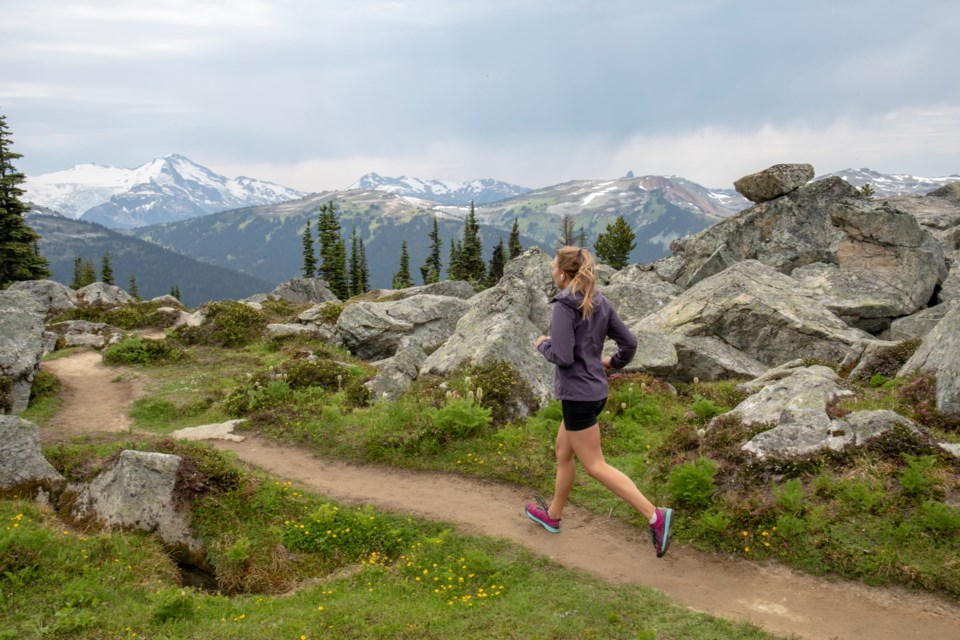An old Latin phrase, solvitur ambulando—“it is solved by walking”—owes itself to a mic-drop moment by the ancient Greek philosopher, Diogenes, who found himself debating someone who believed motion to be illusory and impossible to prove if the moments you examined it in were small enough. After listening to his opponent’s reasoning, Diogenes simply got up and walked away—a demonstration that mooted the pointless paradox.
In the millennia since, the expression has been coopted by everyone from Darwin to the Dalai Lama as stand-in for the idea that movement aids cognition. Need to sort through a problem or clear your head? Go for a walk—or a run.
I’ve keened to this adage my entire writing career, craving both motion and leitmotif of forest or field after long days on the laptop. I’ve experienced revelations while running that echo others’ descriptions of ideas coming to them in dreams—figuring out the way into a flummoxing story, or a lightbulb going off on the elusive ending to a book. I’m out there for the head health, but the cardiovascular benefits are also a welcome bonus. Everyone who runs has their own reasons, but what we all share these days is that more and more of us are doing it.
Though running’s popularity has ebbed and flowed over the decades, its overall trajectory has been up, the most significant inflections tracking events or new technology. In recent years, the pandemic brought many to running as a gym-free form of fitness and a cure for boredom at the same time advances in high-performance footwear were enhancing the experience. Related tech like GPS watches and fitness apps have been turbocharged by social media lifestyle platforms, with #running accumulating more than 100 million posts on Instagram and half a billion on TikTok. And rail-to-trail conversions and rabid backcountry trail building have increased running’s available real estate. With more people than ever taking it up, running is clearly part of the zeitgeist. One undeniable metric is the number of run clubs popping up—particularly in urban settings.
There seems to be a group for any interest or ability, many of which were founded by people who perceived a niche need, like “I can only run on Monday evenings” kind of thing. So they start a club and put it out on social media; I’ve spoken with people who’ve started “dry” run clubs (no post-run beers) and groups for people of colour or low socio-economic status. Post-pandemic, a lot of people joining run clubs are young, bucking a longstanding trend shown in a recent U.K. survey that found most runners take it up in their 30s and 40s. For many, running is both stress relief and a way to burn energy, a way to test yourself or just go really casual, get out there and watch the world go by.
Of course, many club runs also function as social gatherings, playing to the aspect of connection commonly found in the running community. “Almost all the friends I have here I’ve met through run club,” I was told by a guy who started a club out of the running store he and his brother own. And clubs can spawn popular races and fun-runs that also help build community.
If clubs are the corpus of the running community, races are its lifeblood, a cause for getting together, maybe travelling, sometimes raising money, or just doing something completely different. One event back East that may be Canada’s most unique race exemplifies all of this: the Rev and Run is a 5K held on the closed Honda Indy racetrack in Toronto only hours after drivers have vacated, and is known for the smell of rubber, amazing vibes and its fundraising efforts for a local food bank.
Running in general may be staging a moment, but its hayseed cousin, trail running, has mounted a breakout performance—something Whistler runners have long been immersed in but perhaps haven’t noticed creep out into the world at large. Canada is filled with amazing trail runs and races, making for another good travel excuse for those drawn to such things.
Putting yourself out there all starts with your first race. Even when entering with zero designs to win it’s fun to compete with top finishers—who are clearly a different species—and see where you’re at compared to what they’re capable of. I take note of these superhumans during all Whistler races I enter while still feeling fine about being at the back of the pack.
Speaking of which, no matter the type of event, unifying themes include how mid- and back-of-the-packers are celebrated with the same enthusiasm as frontrunners, and tacit acknowledgement among all that running can be an integral part of someone’s journey through personal challenge. At races, cheerers-on are often spotted holding signs saying things like Therapy Was Also an Option.
Every race is indeed a microcosm of any challenge life throws your way, and can similarly teach you something new about yourself. Distance runners say when you’re feeling awful—like nothing’s working, your body feels like it’s going to fall apart, and you’re in a negative mental place—just wait a few kilometres and everything might turn around.
You know, solvitur ambulando.
Leslie Anthony is a Whistler-based author, editor, biologist and bon vivant who has never met a mountain he didn’t like.




